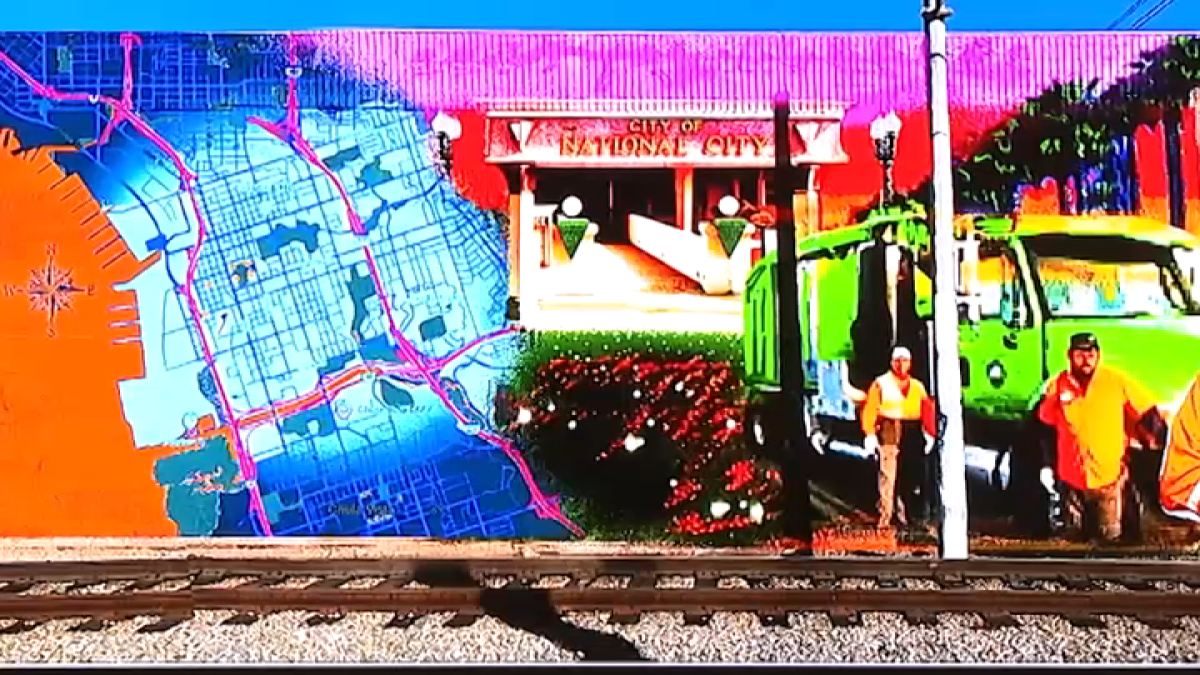Graffiti on the public works building and other structures in National City isn’t just an eyesore. It’s a problem that costs the city tens of thousands of dollars a year and compounds other issues.
“It’s a broken windows theory,” explained Vice Mayor Marcus Bush. “When there is trash or junk that you don’t take care of in your neighborhood, it grows.”
That’s part of the reason why National City councilmembers are rethinking how they clean up graffiti. Instead of just painting over it, giving taggers a blank canvas to vandalize again, they’re planning to use murals to reduce the problem.
On Tuesday night, councilmembers voted in favor of paying artists from Vision Culture Foundation to create two murals that would adorn the south and west walls of the public works building. The art would pay tribute to the city: its people and its workers.
“It’s how you speak truth to power. Everyone likes to see color and vibrancy,” said Ryan Johnson of Vision Culture Foundation.
According to trends Vision Culture has seen in other cities like Philadelphia, Cincinnati and Miami’s art district, more people visit locations with murals, and vandalism tends to fall. That’s partially because sometimes the same taggers who spraypainted the walls could be enlisted to help paint the murals.
“It’s the opposite of punitive,” Johnson said. “We engage them and have them get paid to use their skills they already have. Instead of using it illegally, they’re using it to beautify their neighborhood.”
Bush recently helped with graffiti removal on the 18th Street bridge over Interstate 805. He was among the councilmembers pushing for a change in the city’s clean-up strategy, calling it a budget-saving measure.
The city spends $32,000 a year on graffiti clean-up, and the mural costs only $12,000.
“This is the first phase in what we hope will be a catalyst to be second largest mural project outside of Chicano Park on several buildings along this corridor,” Bush said.
Bush says he’s hoping businesses and private funds will be donated to help with the mural project since a lot of the buildings aren’t public property.
In addition to approving the murals for the public works building, staff will come back later to create a policy for future murals in the city.
